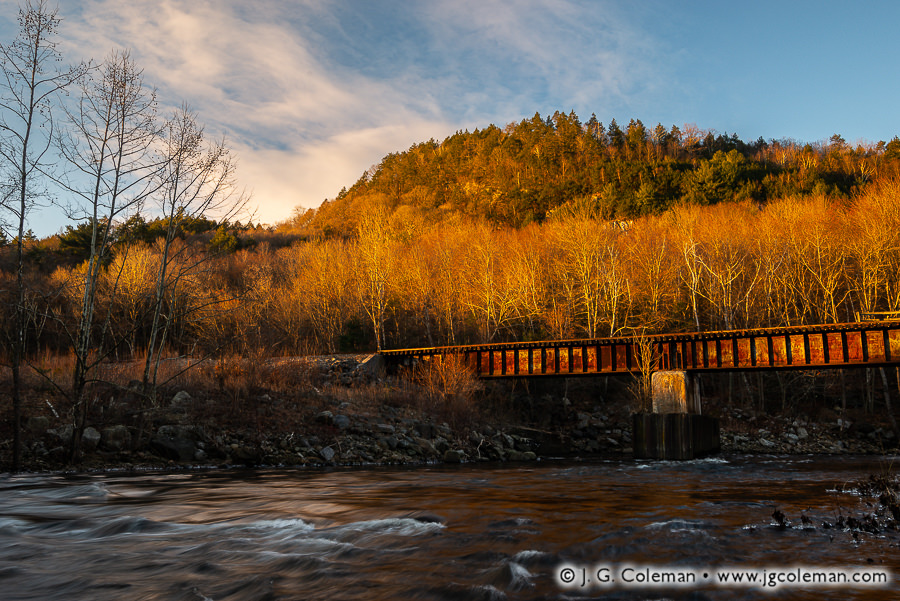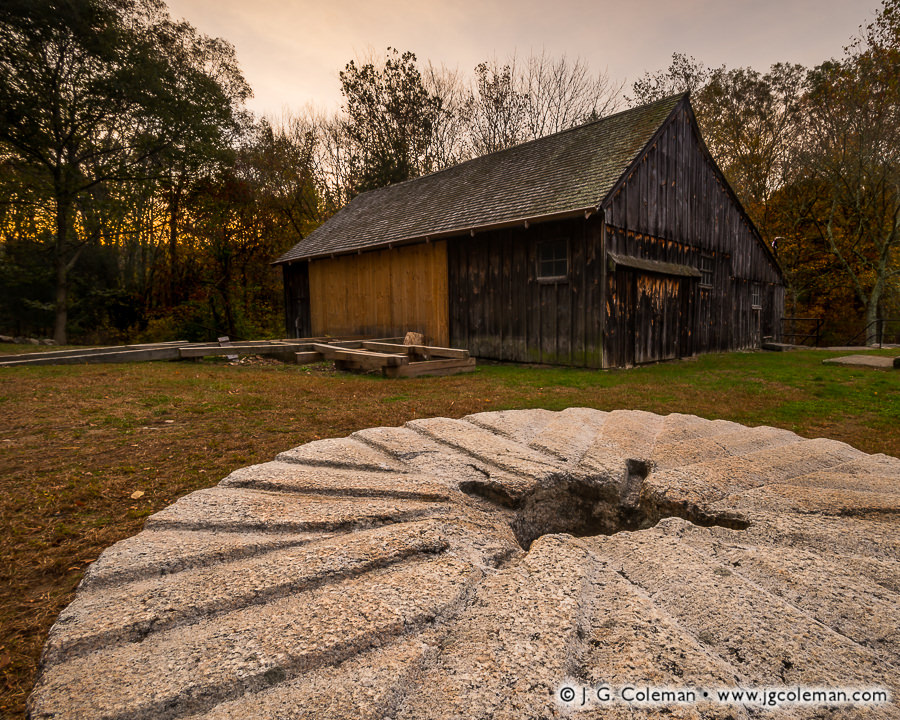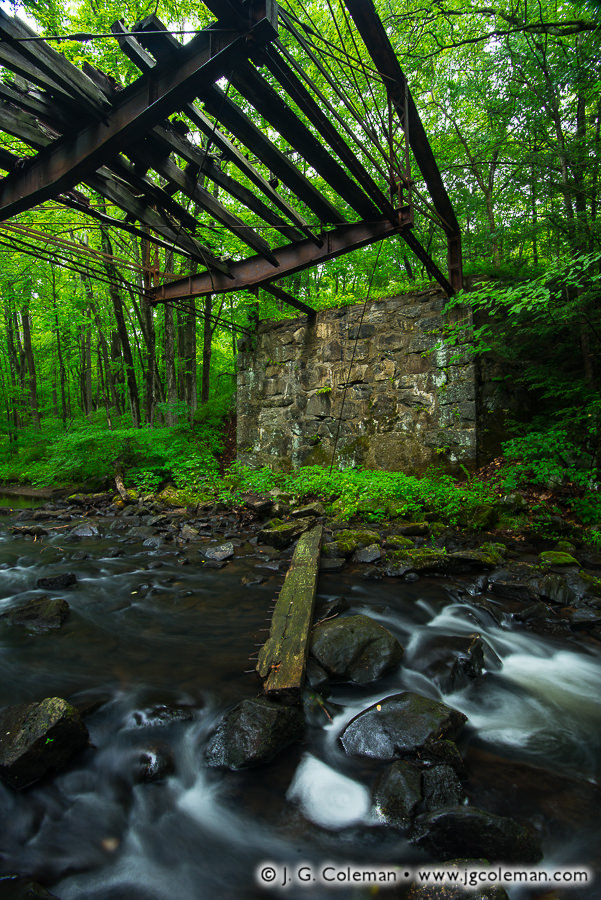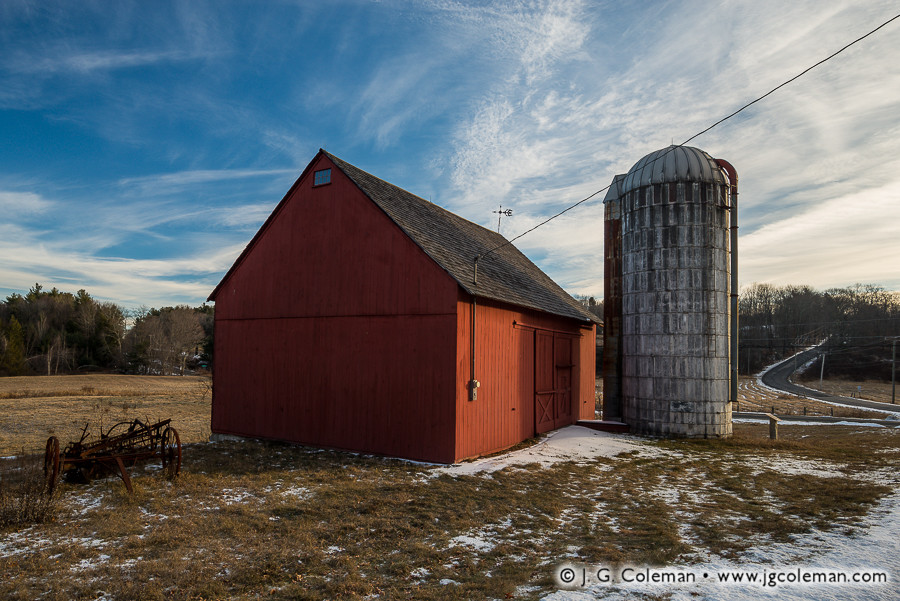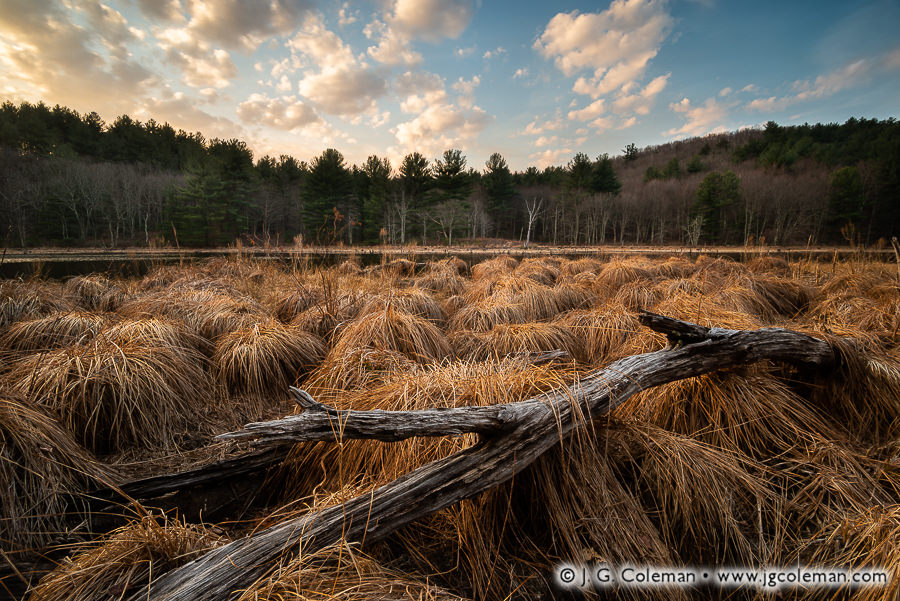
Rifle Range Pond in Mattatuck State Forest, Waterbury, Connecticut
April may have melted the ice from these quiet swamplands amidst the hills north of Connecticut’s Brass City, but the sedges and woodlands alike still bide their time, laying dormant until springtime manages to relax the harshness of New England’s elements.
For me, it’s always illuminating to gain a historical perspective of my subject matter; it can even go a long way towards deepening my creative efforts. But the ease with which I’m able to delve into the past varies sharply from one place to the next and, on occasion, I’m a bit surprised to find how little has been written about certain places in Connecticut despite this state’s nearly 400 years of recorded history.
One such case is Rifle Range Pond, a roughly 14-acre expanse of water and wetlands in Mattatuck State Forest which is just barely contained by Waterbury’s northern border. With such a distinctive name, you’d think it shouldn’t be too hard to uncover some sort of insight into it’s past. And yet, I’ve come up empty-handed on this one. The pond doesn’t appear on USGS topographic maps until 1951 and doesn’t even appear with the name “Rifle Range Pond” until 1968. But given its relatively secluded location along Spruce Brook Road, which is devoid of any nearby shooting ranges as far as I can tell, this pond’s backstory remains a mystery for the time being.
Purchase a Fine Art Print or Inquire About Licensing
Click here to visit my landing page for “Spring of the Sedges” to buy a beautiful fine art print or inquire about licensing this image.
Want to See More?
Be sure to check out more of my work from Waterbury, Connecticut.


